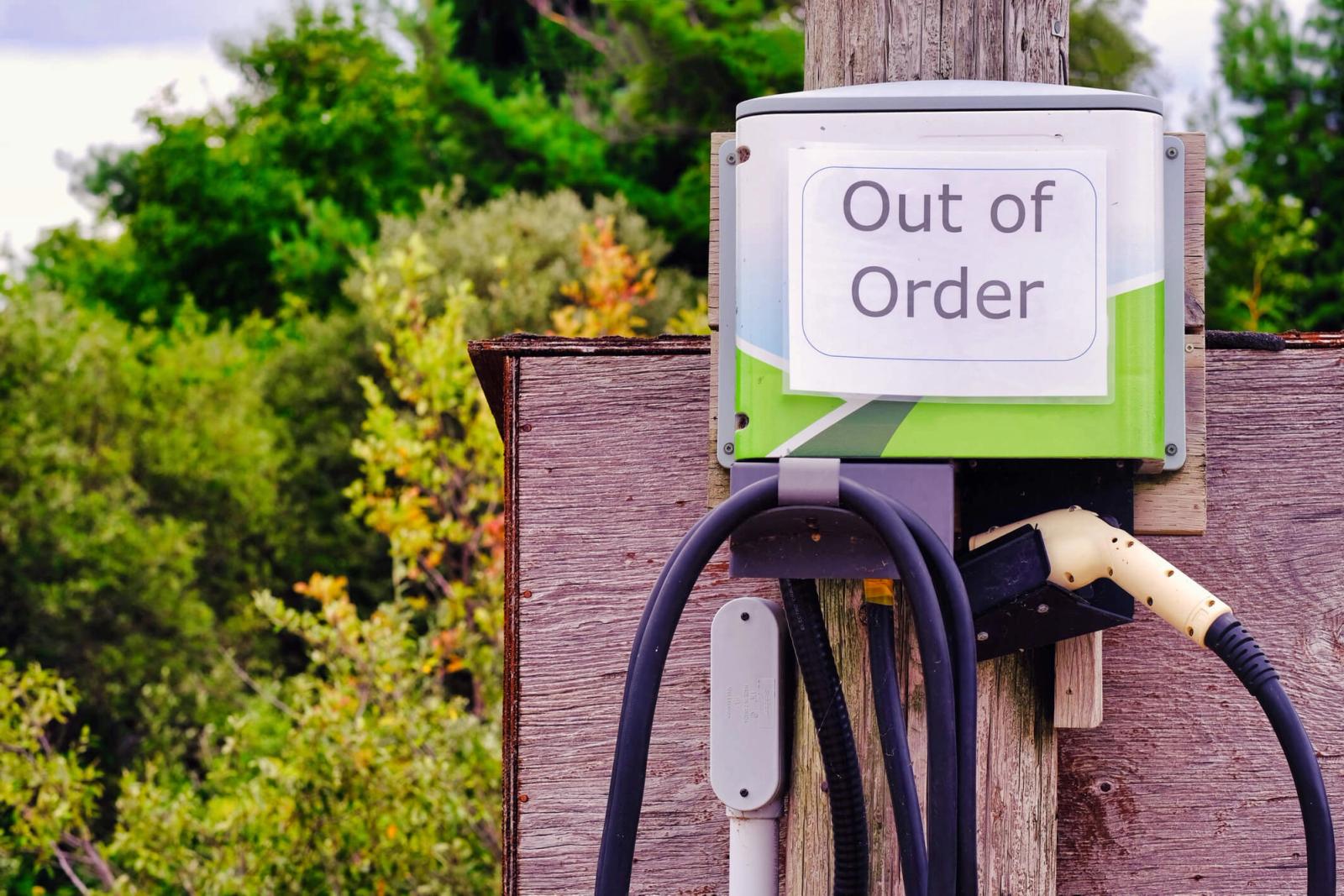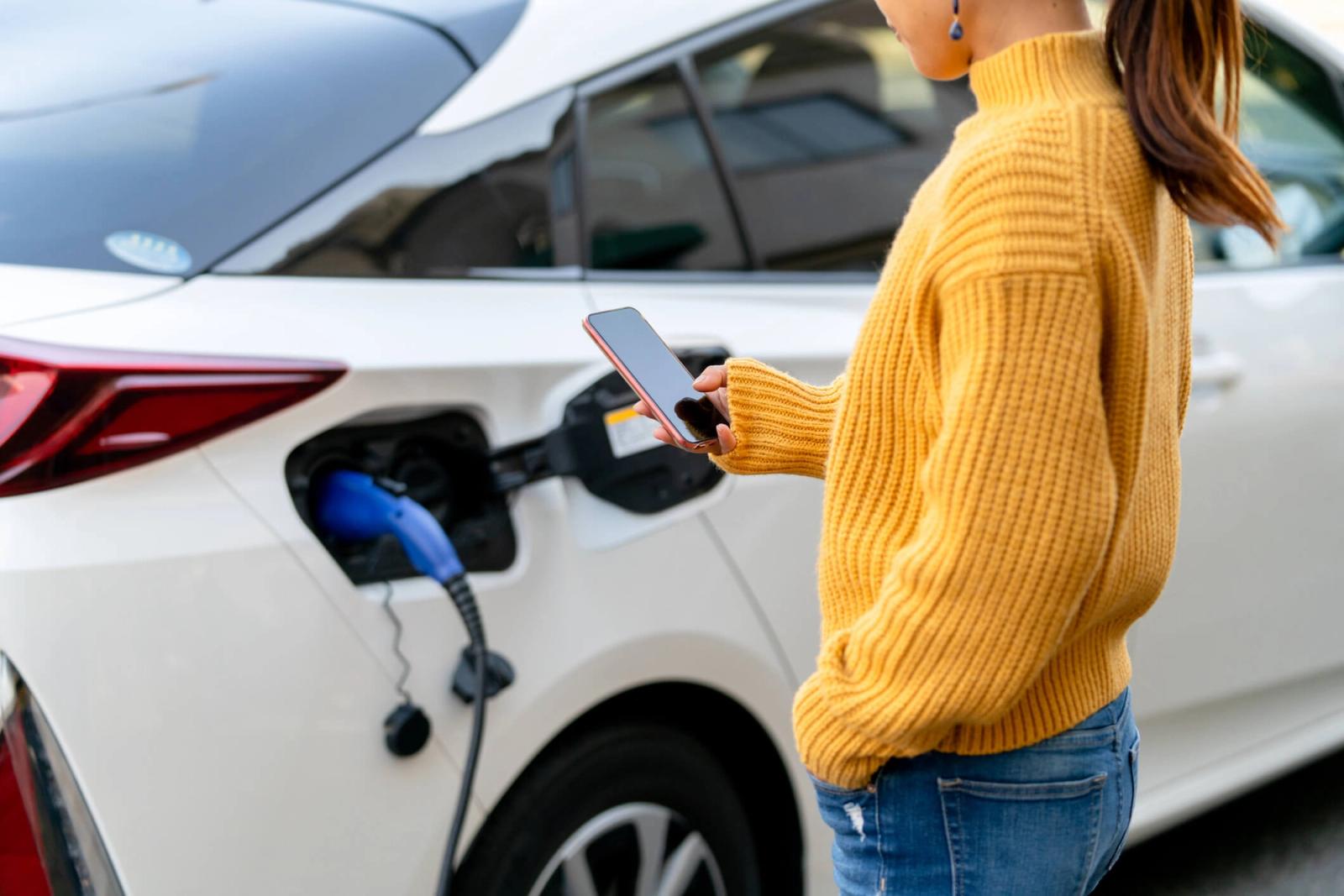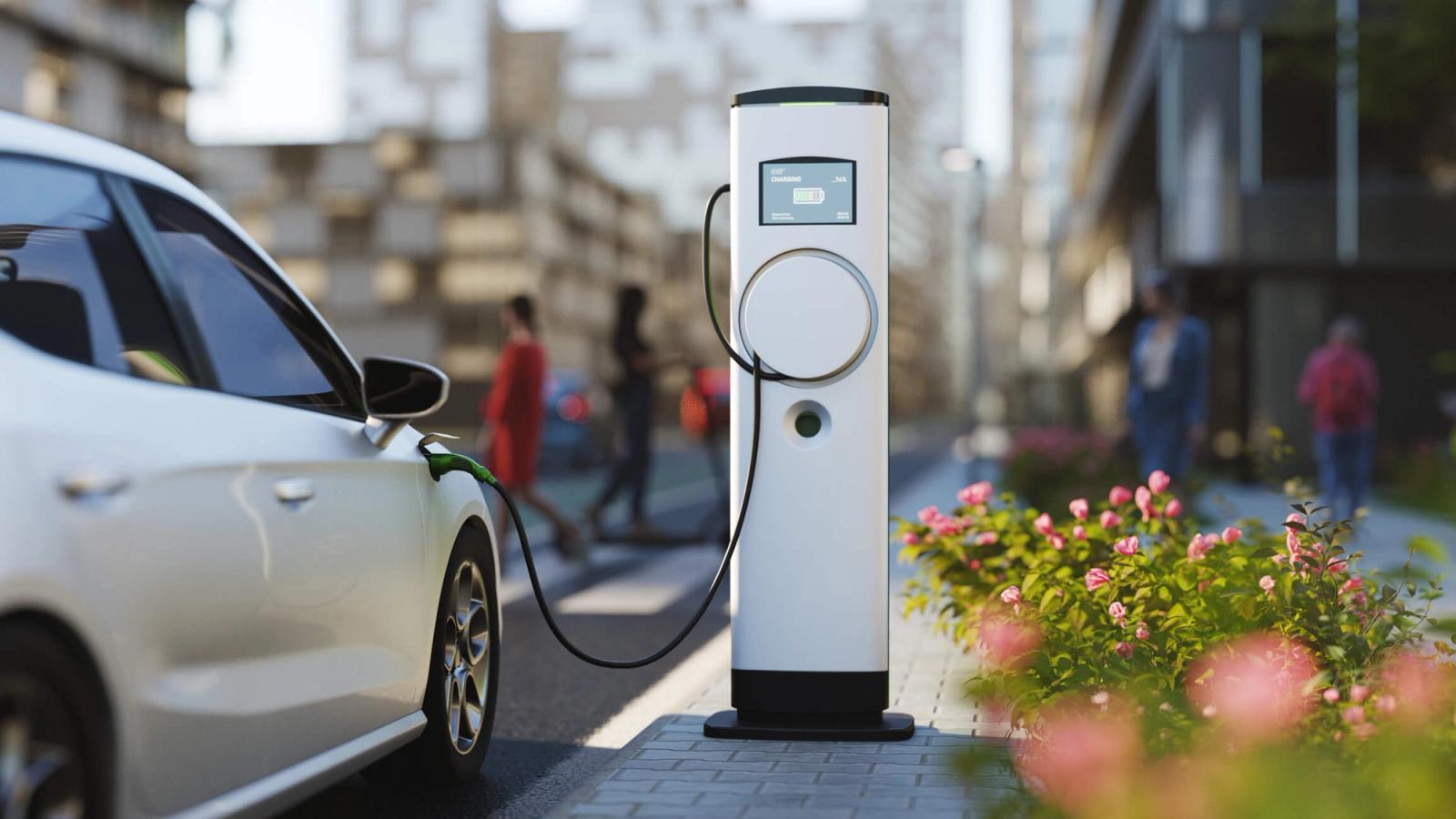Delivering the EV charging experience that drivers deserve

Unleashing the power of Cellular IoT
By 2030, it is estimated that roughly 40 million drivers worldwide will own EVs. Annual sales of passenger EVs exceeded 10 million units in 2022, an increase of more than 50 percent over sales in 2021. EV owners’ motivation to make an environmentally conscious decision shows no sign of slowing.
However, the excitement of ownership is often quickly followed by “I love my EV, but I hate charging it!” It’s not just anecdotal. In a 2024 McKinsey study of current EV owners with experience using charging networks, 70 percent stated that they are dissatisfied with the current infrastructure. Only 10 percent agreed that enough charging points are available.
Likewise, the 2024 J.D. Power U.S. Electric Vehicle Experience (EVX) Ownership Study revealed that public charger availability not only remains the least satisfying aspect of owning a BEV, but also that the experience has become notably worse. Among mass market BEV owners, satisfaction with public charger availability is 32 points lower than a year ago. And distrust is growing. In the 2023 study, one out of every five respondents were not able to charge their EV during their visit to a charging station. A whopping 72% of those unable to charge indicated that it was due to the station malfunctioning or being out of service.

Range Anxiety — the philosophical worry about how far a charged EV could take you — is being rapidly supplanted by Charge Anxiety — the daily worry for EV about if they can charge. Our own limited survey of 25 EV owners revealed their top charging questions:
- My home charger is slow. What if I can’t find a fast charger?
- What if I am out of my area? Will there be available chargers? I’ve had trouble finding reliable charging in places I don’t know.
- I feel skeptical about getting accurate information about available chargers.
- How much time do I need to build into my travel plans to wait in line for charging?
- How many charging apps should I have on my phone to manage different charging providers?
- Will the charging station take my payment method? What if it’s remote and there’s bad connectivity?
Quite simply, EV owners want at least the same experience they had filling their gas tanks: Refuel, Pay, Go. How can we improve the current state of EV charging to fulfill that expectation — and then quickly deliver a far superior EV Charging Experience (EVCX)?
The Power of Smart Cellular IoT Connectivity
Solving the entire EV charging experience has many layers, from siting and permitting through construction and the power grid. In this article, we are going to focus on one area where technology can make a quick impact on the EVCX — smart IoT Connectivity.
What do we mean by smart IoT connectivity? There’s a significant difference between Internet connectivity and IoT. IoT is not as basic or simple as using an Internet connection or putting a device on the Internet. IoT is really about experiences and integrations. The promise of IoT is synergistic, where the net gain is greater than the sum of the parts. IoT connectivity is not just putting the EV and charging station online. It’s the connections and integrations between them that delivers an experience.
Let’s take a look at three areas where the experience of driving and charging an EV is improved by smart cellular IoT.
Availability. Availability. Availability.
It’s the #1 anxiety. How can consumers feel confident traveling in their EVs that they will be able to get to their destination? The problem shows no sign of slowing down. With the number of EVs increasing every year, the country will need approximately 9.5 million ports by 2025 and 28.0 million by 2030.
- This Charge Anxiety is hurting sales. Forty-two percent of respondents who identified as skeptical EV buyers stated that they will only move forward with an EV purchase if public-charger availability is equivalent to that of current gas stations.
- Additionally, as EV ownership expands, reliance on the public-charging infrastructure will increase as more EV owners will lack the needed space or power requirement at their homes for charging. Similarly, forty-two percent of respondents who do not yet own EVs stated that they will be unable to charge at home.
The EV charging issue is global. The European Commission estimates that 3.5 million charging points are needed by 2030 to support the level of vehicle electrification necessary to achieve the proposed 55% CO2 reduction for passenger cars.
- To meet that target, ~2.9 million public charging points would need to be built in the next seven years - 7,900 per week.
- Looking over the past seven years, EV sales has outpaced the growth of the charging point network by 3x. Between 2017 and 2023, electric car sales increased 18x, while the number of public chargers in the EU grew 6x.
- The geographic dispersion of chargers leads to challenges. Netherlands, France, and Germany have 61% of all EU charging points, but they only account for 20% of the EU’s surface area. The remaining 39% of charging points are located throughout 24 member states.

Cellular IoT can help existing drivers be more confident in the availability of charging and help to change the perception of future EV drivers. Fast and reliable IoT cellular connectivity at the charging station enables consumers to:
- Accurately see the current conditions at the charging station, capacity, charging rate, and stall availability
- Receive real-time alerts and notifications, as well as predictive and responsive suggestions
- Have a consistent experience, whether the charging station is indoors, outdoors, or remote
To deliver that EVCX, charge point operators need accurate and insightful data to build consumer trust. Cellular IoT plays a lead role in solving that problem. "The emphasis on reliability and uptime is something we have long been focused on at Blink. We are dedicated to the concept of ‘right charger, right place, right time’ so we can meet growing infrastructure demand,” noted Mike Battaglia, COO, Blink. “In order to achieve widespread range confidence, innovation and consistent connectivity are critical elements of achieving our mission!"
"The emphasis on reliability and uptime is something we have long been focused on at Blink. We are dedicated to the concept of ‘right charger, right place, right time’ so we can meet growing infrastructure demand.”
– Mike Battaglia, COO, Blink
According to McKinsey, nearly 40% of the IoT’s economic value will be contributed by operations optimization and account for $1.3T by 2030. Cellular IoT provides Charge Point Operators (CPOs) with:
- Reliable connectivity to provide real-time data to consumersConsistent telemetry information about each charging station and the opportunity to move to predictive maintenance (firmware upgrades, alerts, etc.)
- Real-time EV and driver-specific information to do predictive modeling and offer suggestions
Cellular IoT delivers reliable, real-time data — a key part of the solution to end Charge Anxiety and building charging station trust for EV owners.
EV Charging Speed
When selecting a public charge point, nearly half of survey respondents indicated that charging speed is their most important consideration. What’s more, they have high performance expectations, with over 60 percent wanting charging times of 30 minutes or less.
According to the U.S Department of Transportation, Level 2 EV chargers, commonly used at workplace and public charging stations, use 208V from the electrical utility grid and can charge an EV to 80 percent from empty in 4-10 hours.
- Level 3 Direct Current Fast Charging (DCFC) stations can charge an EV to 80 percent in just 20 minutes to 1 hour. Currently, there are approximately 135,000 Level 2 stations compared to 38,000 Level 3 DCFC stations.
- Overall, the EV charging station infrastructure has grown at a 43.7% compound annual growth rate (CAGR) from 2018 to 2023 and charging outlets at the stations have experienced year-over-year growth of nearly 20% every year since 2018.
- Plus, 85% of Level 3 chargers and 89% of Level 2 chargers are in US Metropolitan Statistical Areas, making longer distance and rural charging even more challenging for EV owners.
In Europe, the lack of availability of rapid charging is also significant. Only ~13.5 per cent of Europe’s charging points are currently fast chargers (a capacity of more than 22kW). The remainer have a capacity of 22kW or less. Plus, delays in permitting and grid connections are slowing the installation of new stations.
Cellular IoT can help EV existing drivers make smarter, more informed choices about where they can charge their EV. Armed with real-time data about what stations are available and the level of charging availability, drivers can pick the right station at the right time. They can opt for fast charging if time is an essence. If a station has Level 2 availability and nearby amenities, like restaurants or shopping, they may choose that option. Reliable, real-time data helps drivers know before they get there what to expect and manage their dwell time while charging.
Armed with real-time data about what stations are available and the level of charging availability, drivers can pick the right station at the right time.
For Charge Point Operators, managing the availability and cost of the power is a constant balancing act. In most cases, DC fast-charging stations require a connection to the electricity grid to power the site and recharge their customers’ vehicles. Charge point operators pay a fee to the utility power used and have to compete for grid power with other businesses in the area. Cellular IoT enables Charge Point Operators (CPOs) to:
- Better manage energy usage during peak hours
- Offer special pricing based upon their costs, whether charging extra for faster or renewable power - or lowering rates to drive consumers to slower charging but available chargers
- Integrate with power grids to inform operators of increased demand and smoothen the burden on the grid
Real-time information powered by cellular IoT at charging stations enable CPOs to more efficiently manage the consumer experience and their utility costs.

Simplified and consistent payments
Consumers face a number of challenges to simply pay for their charge. EV drivers keep multiple charging networks’ apps on their phone, each with its own user experience, pricing, payment methods, and updates to maintain. Traveling out of state only increases the chances of using a new charging network. At many stations, credit card payments are not accepted. RFID readers wirelessly transmit account information from an RFID prepaid card. NFC payments work similarly. At the heart of these payment methods is network connectivity.
Earlier this year, the U.S. National Charging Experience Consortium (ChargeX Consortium) published a comprehensive study focused on EV Payment Systems. The report acknowledged that “poor network connectivity of payment systems is a significant issue” and that “EV charging located outside urban areas suffers from chronic connectivity issues. The study’s proposed solution? Cellular IoT connectivity and using dedicated SIM cards for the strongest signal at the station location.
EV drivers in Europe face the same challenges. The lack of interoperability between different EV charging cards and networks contributes to the fragmentation of the market. Consequently, 36% of EV drivers own four or more different cards and/or tokens to charge at different charging networks and on average use more than three different EV charging apps.
With robust cellular IoT connectivity at charging stations, EV drivers can be confident that their apps, credit cards, and RFID/NFC all work without the frustration that comes with connectivity issues.
For CPOs, frictionless payments are critical not only to improving the charging experience, but also for their bottom line. The goal of the U.S. National Electric Vehicle Infrastructure plan rolled out by the Biden administration in 2022 is to kickstart construction of nearly a half-million charging stations by 2026. To get those incentives, developers must meet certain requirements — including the requirement that contactless payment be accepted from all major credit and debit cards with no limitation on access based on membership, making the need for IoT cellular connectivity even more important.
Connectivity powered by cellular IoT is key to delivering the EVCX that today’s customers are demanding and that they deserve.

What’s next?
We’ve looked at some of the major challenges that our industry is solving for today with cellular IoT connectivity. What’s even more exciting is what’s to come.
Smarter charging
Imagine a day when a driver puts in a destination and the car will dynamically route a driver to the best charging station that most closely matches the desired consumer experience. Perhaps it’s a station near food for lunch or by clean restrooms for the kids. Maybe it’s one with the fastest charging that’s been reserved for you. And perhaps the weather has already been factored into the drive for you based on the weather conditions at that charging station relayed by IoT sensors. Or a day in the not too distant future where their self-driving vehicle will know the status of other cars in real-time. All of that will be powered by the data delivered by the cellular IoT connections.
More secure charging
Video cameras enhance the physical security of CPOs sites both for the EV drivers and the physical charging stations. Being able to detect, view, and respond to events from anywhere in real-time gives CPOs another way to deliver a superior and secure customer experience. “We've talked to numerous Charge Point Operators looking to add video security to their charging stations,” noted Brandon Davito, SVP of Product and Operations at Verkada. “Ultra reliable, high speed, high data throughput is critical for these systems and an ideal use case for cellular IoT.” Ultra reliable, high speed, high data throughput is critical for these systems and an ideal use case for 5G powered cellular IoT.
“We've talked to numerous Charge Point Operators looking to add video security to their charging stations. Ultra reliable, high speed, high data throughput is critical for these systems and an ideal use case for cellular IoT.”
— Brandon Davito, SVP of Product and Operations, Verkada
New revenue streams
Advertisers are looking for new ways to reach consumers in their daily lives, with Digital Out-of-Home (DOOH) advertising spending estimated to reach US$5.19bn in 2024. Digital screens at EV stations offer brands the ability to target EV drivers with advertising tailored specifically to their eco-affinity. Advertising specific to the location of the charging station, like coupons for nearby restaurants or attractions, can also be served to the driver during their often lengthy dwell time. Brands can also buy EV network ads based on the time of day, weather, audience demographics, and other accessible data such as sporting events or news.
In Europe, DOOH advertising is being leveraged to create profitable EV charging infrastructure in early-stage markets. Generating revenue from day one can offset infrastructure costs and bring EV charging to new areas quickly.
Powerful cellular IoT enables CPOs to reliably deliver targeted DOOH advertising to derive additional revenue and also provide relevant advertising and services to EV drivers.
What to look for in a cellular IoT provider
Connectivity is key to delivering an exceptional EV charging experience. There are five key things to look for in your cellular IoT provider:
- Reliability. New multi-network SIMs feature two fully independent, core mobile networks on each SIM that seamlessly switch to a backup network in the event of an outage.
- Commitment. Look for a cellular SIM provider that includes uptime guarantees in their contracts and 24/7 support to resolve any issues quickly.
- Performance.You need a low latency and high throughput solution to handle the data that’s going to be unleashed - more telemetry plus video and advertising - without swapping cellular IoT SIM cards.
- Simplified management. Robust dashboards and analytical tools give real-time visibility into device activity and performance, so you can keep operations running smoothly.
- Global coverage. Start with a provider that can seamlessly connect to carriers across the world to ensure your user experience is consistent.